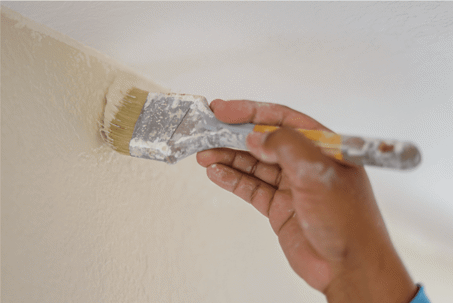You've decided you're finally going to take the plunge and paint your home, but there's just one problem: you have no idea where to start. Don't worry. We've got you covered. This blog will guide you to painting your home like a professional. With a bit of time and effort, you can give your home a face-lift in no time!
5 Tips To Painting Like a Professional
Prime!
Priming your surfaces before you paint creates a barrier between the paint and the surface itself. It also helps prevent chips and cracks down the road, ensuring your paint lasts longer. While primer is not always necessary, it will save you money because it reduces the number of more expensive topcoats you need to get beautiful, lasting results. We recommend using a primer before painting in the following circumstances:
- New drywall
- Patched or repaired drywall
- A significant wall color change
- Painting over oil-based or glossy paints
- Stain or odor coverage
Quality Equipment
Cheap brushes will shed bristles, leave streaks, and make it nearly impossible to paint a straight line in precarious spots. The difference in the finished product of a high-quality brush compared to a cheap brush is highly noticeable. By investing a little more, the results can be tremendous!
Lighting
When painting a room, ensure it is well-lit with natural light, lamps, or a combination of both. A dim room will hide imperfections and can result in an uneven finish. Don't let the illusion of shadows ruin all of your hard work.
Thick to Thin
When applying paint to your walls or other surfaces, always start with a thin layer and build up to thicker as needed. This will help avoid any drips or runs in your paint. It will also ensure a more even coat and may require less paint to be used. We recommend dipping to 1/3 the length of the bristles, then tapping the brush against the inside of the paint container to gently flip off the excess, leaving sufficient paint for proper flow on each brushstroke.
Ventilation
Painting can be a smelly process, so it is crucial to make sure you have good ventilation. Open windows and doors if possible and set up fans to help circulate the air. Additionally, proper ventilation will improve your results. Air exchange will help keep your paint fresh and lower the risk of harm from condensation and trapped, moisture-laden air.
BONUS TIP!
If you require the use of a ladder to complete your job, follow these tips to ensure your paint safely.
- Check your ladder for potential damage that could cause it to malfunction.
- Focus on stability by keeping your shoulders within the width of the rails. Trying to save time by stretching out too far is never worth it.
- Wear the right shoes. Grippy shoes with a rubber sole work the best and assist with stability.
- Keep your ladder on solid ground. Uneven terrain is hazardous.
- If you are painting outside, avoid working on a metal ladder where power lines are present.
- Know your limits. If you are not confident that you can safely complete the job using a ladder, call a trained professional who can safely help you finish your masterpiece!
Following these tips for priming, painting, equipment, lighting, ventilation, and ladder safety, you have the preparation to plunge into a new painting project. It may take a little practice, but soon you’ll be painting like a professional!
Painting Happiness Across Greater Los Angeles
At ALLBRiGHT PAINTING, our team of experienced professionals will assist you with your painting needs and ensure your home looks its best! Give us a call today. (661) 464-0771

